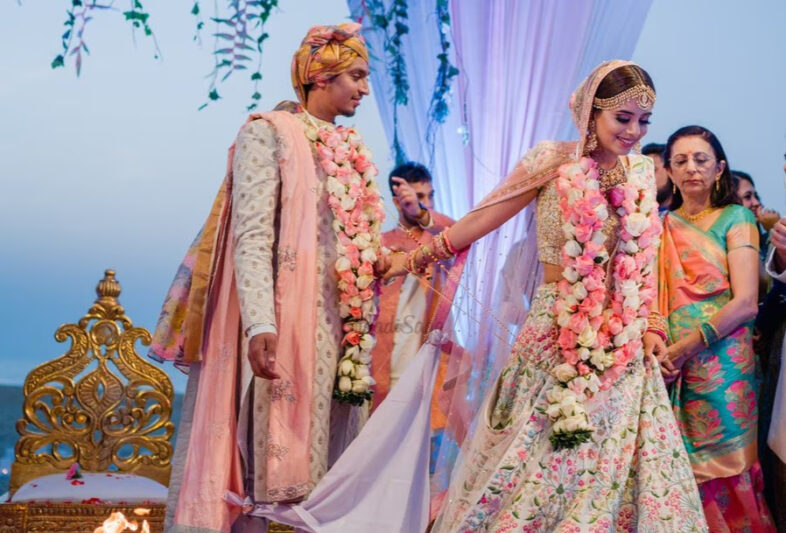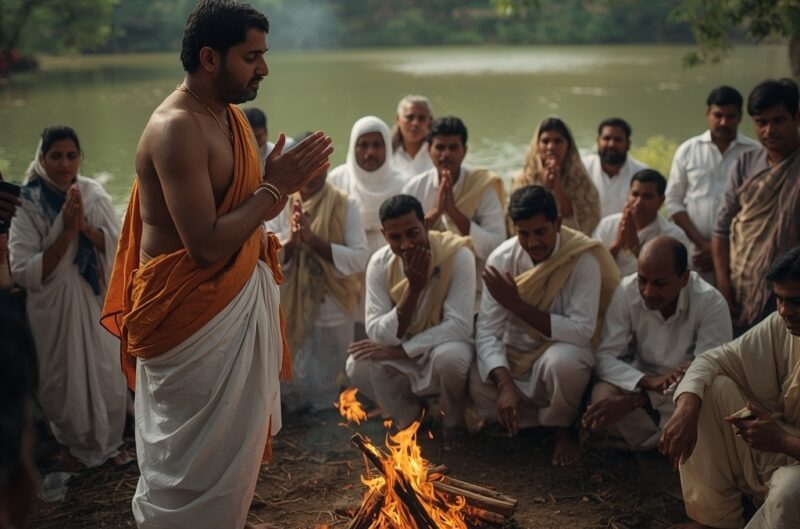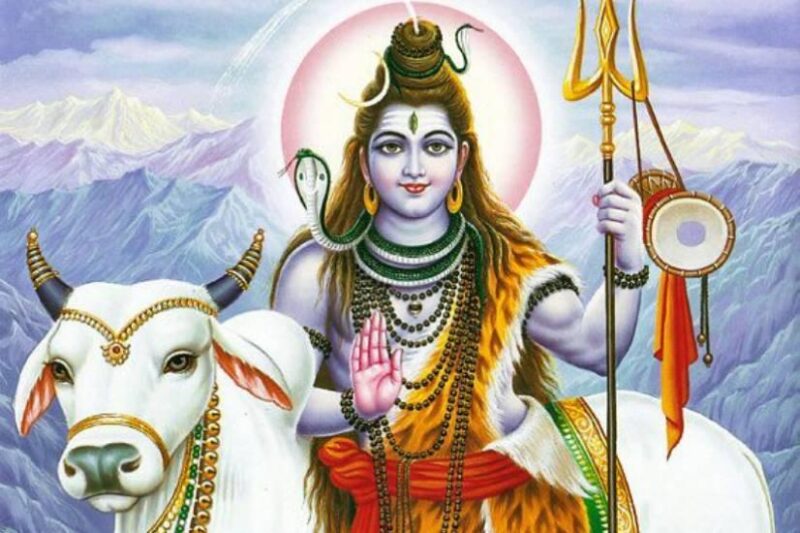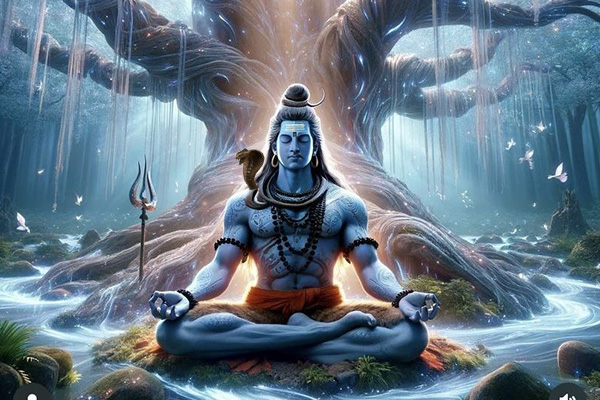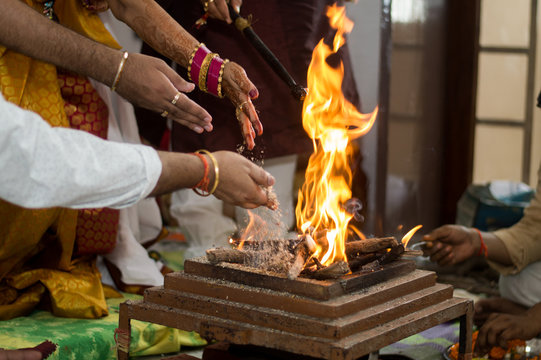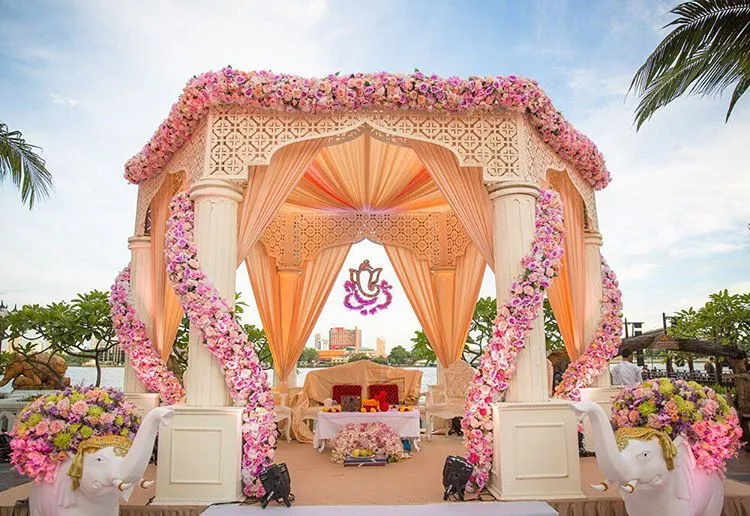Maha Shivratri 2025 in Uk
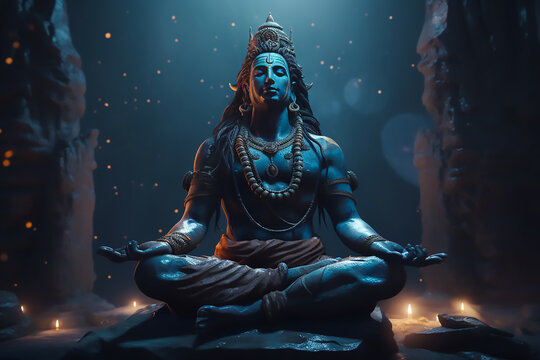
1) Maha Shivratri Date & Puja Muhurt 2025 in Uk
2) What is Maha Shivratri?
3) Maha Shivratri Puja Vidhi
4) Shiva Mantras
5) What is Rudrabhishek Puja? Learn the benefits of Maha Shivaratri and the complete method of doing it at home
6) which path you should do on mahashivratri?
7) Shiva Ashtottara Shatanamavali – 108 Names of Shiva
8) Shri Rudrashtakam & Rudrashtakam Benefits
9) Shiv Chalisa
10) Shiva Kshama Prarthana Mantra
Maha Shivratri 2025 in Uk – Maha Shivratri, known as the “Great Night of Shiva,” is a significant Hindu festival dedicated to Lord Shiva. In 2025, it will be observed on Wednesday, February 26.
1) Maha Shivratri Date & Puja Muhurt 2025 in Uk
Date and Puja Muhurat in the UK:
- Maha Shivratri Date: Wednesday, February 26, 2025.
- Nishita Kaal Puja Time: 11:46 PM on February 26 to 12:39 AM on February 27.
2) What is Maha Shivratri? Significance of Maha Shivratri:

Maha Shivratri 2025 in Uk holds immense importance in Hinduism, symbolizing the convergence of Shiva and Shakti. It commemorates the divine marriage of Lord Shiva and Goddess Parvati and is also associated with Shiva’s cosmic dance, the Tandava. Observing this festival is believed to help devotees overcome darkness and ignorance, leading to spiritual growth and inner peace.
Legends Associated with Maha Shivratri:
Several legends are linked to Maha Shivratri:
- Divine Marriage: It marks the wedding day of Lord Shiva and Goddess Parvati.
- Tandava Dance: The night when Lord Shiva performed the cosmic dance of creation, preservation, and destruction.
- Manifestation of the Linga: It is believed that Lord Shiva manifested as a Linga on this night.
Observing Maha Shivratri with devotion is believed to absolve past sins, leading to moksha (liberation) and the blessings of Lord Shiva.
3) Maha Shivratri 2025 in UK Puja Vidhi
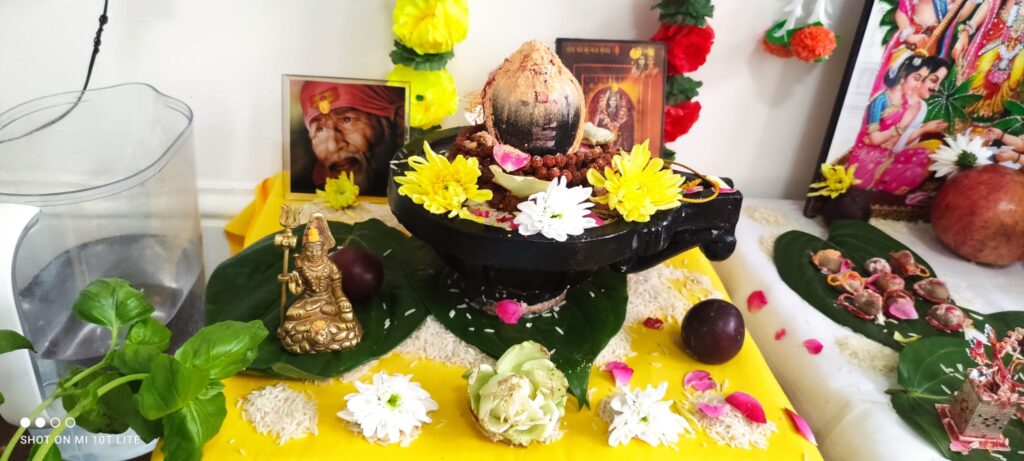
Here is the detailed Maha Shivratri Puja Vidhi (rituals and procedure) to perform the puja with devotion and accuracy:
Preparations for Maha Shivratri
- Cleanliness and Bath:
- Wake up early and take a bath, preferably with holy water like Ganga Jal.
- Wear clean, preferably white or light-colored clothes.
- Setup the Puja Area:
- Clean the place of worship or home temple.
- Decorate the area with flowers and light diyas (lamps).
- Place a Shiva Linga or a picture/idol of Lord Shiva on a clean platform.
- Gather the Puja Samagri (Materials):
- Shiva Linga or image of Lord Shiva.
- Bel Patra (Bilva leaves) with three leaflets.
- Flowers (white or fragrant ones like jasmine).
- Fruits (like bananas, apples, or seasonal fruits).
- Milk, honey, curd, ghee, sugar, and water for Abhishekam (bathing the Shiva Linga).
- Sandalwood paste and raw rice.
- Incense sticks, camphor, diya (lamp), and dhoop.
- Rudraksha mala (for chanting mantras).
Step-by-Step Maha Shivratri 2025 in Uk Puja Vidhi
Morning Rituals
- Sankalp (Resolution):
- Sit in front of the Shiva Linga or idol and make a sankalp (vow) to perform the puja with devotion and dedication.
- Pray for Lord Shiva’s blessings for peace, prosperity, and liberation.
- Abhishekam (Bathing the Shiva Linga):
- Perform the Abhishekam of the Shiva Linga by offering these items one by one:
- Milk: Symbolizes purity and calmness.
- Honey: Represents sweetness and love.
- Curd: Signifies health and prosperity.
- Ghee: Denotes strength and victory.
- Sugar: Symbolizes bliss.
- Water: Represents the purification of the soul.
- Perform the Abhishekam of the Shiva Linga by offering these items one by one:
- Offerings to Shiva:
- Place Bel Patra (Bilva leaves) on the Shiva Linga. Ensure the leaves are not torn or damaged.
- Offer white flowers, sandalwood paste, and raw rice.
- Light incense sticks and a diya.
- Chant Mantras:
- Chant “Om Namah Shivaya” or the Maha Mrityunjaya Mantra during the entire process.
- You can also recite the Shiva Chalisa or other hymns dedicated to Lord Shiva.
- Pradakshina (Circumambulation):
- Walk around the Shiva Linga in a clockwise direction 3 or 7 times, while offering prayers.
- Aarti:
- Perform the Aarti using camphor and a diya. Sing the Shiva Aarti to conclude the morning puja.
Night Puja (Jagaran and Four Prahar Puja)
Maha Shivratri puja 2025 in Uk is performed four times during the night, representing the four Prahars (quarters) of the night.
- First Prahar (Evening):
- Perform Abhishekam with milk and offer fruits, Bel Patra, and flowers. Chant “Om Namah Shivaya” 108 times.
- Second Prahar (Midnight):
- Perform Abhishekam with curd. Offer sandalwood paste and light incense sticks. Recite Shiva mantras and meditate.
- Third Prahar (Early Morning Hours):
- Use ghee for Abhishekam. Offer sweets and light a diya. Chant the Maha Mrityunjaya Mantra for protection and blessings.
- Fourth Prahar (Dawn):
- Perform Abhishekam with honey. Offer raw rice, Bel Patra, and water. Conclude the puja with prayers for spiritual liberation.
Fasting Rules
- Observe a fast (vrat) for the entire day.
- Avoid grains and consume only vrat-friendly foods like fruits, milk, and nuts if needed.
- Stay hydrated and maintain focus on spiritual activities, such as chanting mantras, meditating, and praying.
Concluding Rituals
- Offer Prasad:
- Distribute the fruits, sweets, and offerings made during the puja as prasad to family and guests.
- Seek Blessings:
- Bow down in front of Lord Shiva and seek his blessings for health, wealth, and spiritual enlightenment.
- Jagaran (Staying Awake):
- Spend the night in devotion by chanting, meditating, or singing bhajans dedicated to Lord Shiva.
Important Tips
- Remain calm and focused throughout the puja.
- Use fresh and clean items for worship.
- Follow the Nishita Kaal (midnight period) for the most auspicious time for puja.
- Avoid using tulsi leaves for Shiva Puja, as it is not considered appropriate.
4) Shiva Mantras
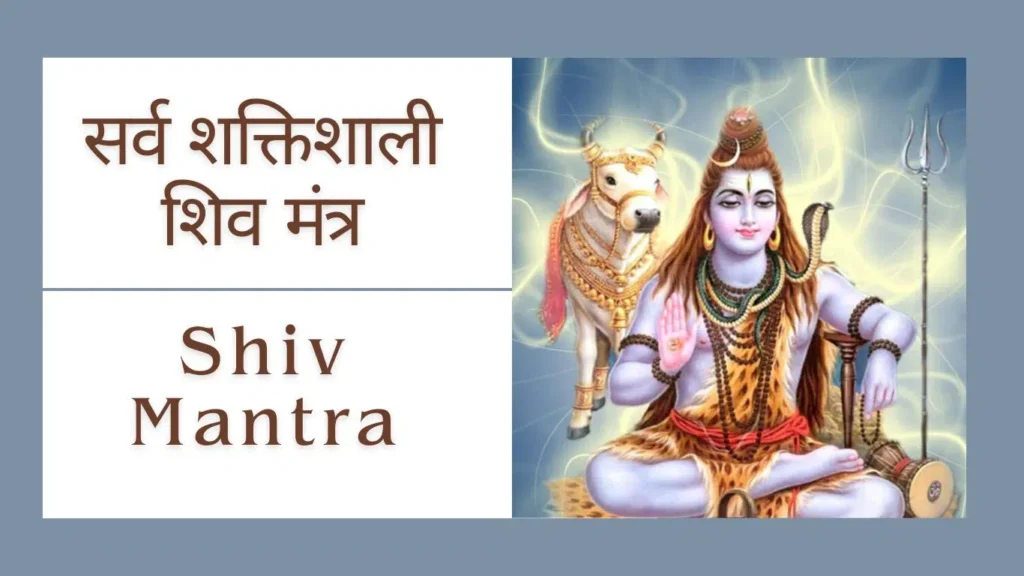
Here are some powerful and widely chanted Shiva mantras that you can use for Maha Shivratri or your daily prayers:
1. Panchakshara Mantra
- Mantra:
Om Namah Shivaya - Meaning: “I bow to Lord Shiva.”
- Significance: This is one of the most famous mantras dedicated to Lord Shiva. It harmonizes the five elements of nature (earth, water, fire, air, and space) and brings peace and spiritual growth.
2. Maha Mrityunjaya Mantra
- Mantra:
Om Tryambakam Yajamahe Sugandhim Pushtivardhanam
Urvarukamiva Bandhanan Mrityor Mukshiya Maamritat - Meaning:
“We worship the three-eyed One (Lord Shiva), who is fragrant and who nourishes all beings. May He liberate us from the bondage of death and lead us to immortality.” - Significance: This mantra is known as the “Death Conquering Mantra.” It is chanted for protection, health, and longevity. It also brings inner peace and divine blessings.
3. Rudra Gayatri Mantra
- Mantra:
Om Tatpurushaya Vidmahe
Mahadevaya Dheemahi
Tanno Rudrah Prachodayat - Meaning:
“We meditate on the supreme being, the Great God, Lord Shiva. May that Rudra inspire and guide us.” - Significance: Chanting this mantra invokes Lord Shiva’s guidance and divine energy, helping to remove negativity and achieve enlightenment.
4. Shiva Dhyan Mantra
- Mantra:
Karacharana Kritam Vaa Kayajam Karmajam Vaa
Shravananayanajam Vaa Manasam Vaa Aparadham
Vihitam Avihitam Vaa Sarvamet Kshamasva
Jaya Jaya Karunabdhe Shree Mahadeva Shambho - Meaning:
“Whatever sins have been committed by the actions of my hands and feet, my words, my body, my ears, and my eyes, or through my mind, whether knowingly or unknowingly, O Lord Shiva, please forgive them all. Glory to you, O ocean of compassion, O great God, Mahadeva, Shambho!” - Significance: This mantra is for self-purification and seeking forgiveness for mistakes, both intentional and unintentional.
5. Linga Ashtakam
- Mantra:
Brahma Murari Surarchita Lingam
Nirmala Bhashita Shobhita Lingam
Janmaja Dukha Vinashaka Lingam
Tat Pranamaami Sadaa Shiva Lingam - Meaning:
“I bow to the Shiva Linga, which is worshipped by Brahma, Vishnu, and the gods, which shines with the purity of speech, and which destroys the sorrows of birth and death.” - Significance: This prayer glorifies the Shiva Linga and is a powerful hymn to recite during Shiva worship.
6. Aum Mantra (Pranava Mantra)
- Mantra:
Om - Meaning: The primordial sound representing the universe and the essence of Lord Shiva.
- Significance: Chanting “Om” connects you with the divine energy of the cosmos and promotes meditation, inner peace, and spiritual awakening.
7. Shiva Shadakshara Stotram
- Mantra:
Om Hreem Namah Shivaya Om - Meaning: A combination of the Panchakshara Mantra (Om Namah Shivaya) and the seed syllable (Hreem) that invokes Shiva’s cosmic energy and divine blessings.
- Significance: This mantra provides immense power and removes obstacles in the path of success and spiritual progress.
Tips for Chanting:
- Chant these mantras with devotion and a clear mind.
- Use a Rudraksha mala for counting (108 repetitions).
- Chant early in the morning or during the Nishita Kaal (midnight on Maha Shivratri) for maximum benefits.
- Meditate on the form of Lord Shiva while chanting to deepen your spiritual connection.
Call here: +44 079 0373 5365 if you’d like guidance on any specific topic or you would like perform puja under guidance of Hindu priest ketul Joshi maharaj! “Meet once and change your life!”
5) What is Rudrabhishek Puja? Learn the benefits of Maha Shivaratri and the complete method of doing it at home
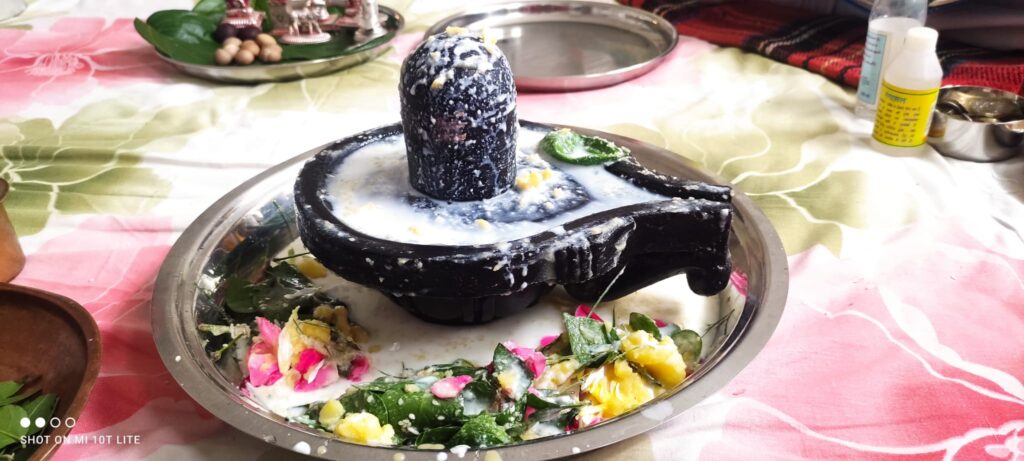
What is Rudrabhishek Puja?
Rudrabhishek Puja is one of the most sacred and powerful rituals performed to honor Lord Shiva. It involves the ceremonial bathing of the Shiva Linga with various offerings, accompanied by the chanting of Vedic mantras like the “Rudra Sukta” from the Yajurveda. The word “Rudra” refers to Lord Shiva, and “Abhishek” means “ritual bath.” This puja is particularly significant on Maha Shivratri, as it is believed to amplify the blessings of Lord Shiva.
Benefits of Rudrabhishek Puja
- Spiritual Growth: Helps devotees achieve inner peace and spiritual awakening.
- Removal of Negativity: Eliminates negative energies, sins, and past karmic debts.
- Health and Wealth: Brings good health, prosperity, and harmony to one’s life and family.
- Wish Fulfillment: Helps fulfill desires and overcome obstacles in personal and professional life.
- Protection: Offers protection from evil forces and ensures overall well-being.
- Liberation (Moksha): Aids in attaining salvation and divine grace.
Complete Method to Perform Rudrabhishek at Home

Here is the step-by-step guide to performing Rudrabhishek at home:
1. Preparations
- Clean the Puja Area:
- Clean the place where you will set up the Shiva Linga or idol.
- Decorate the area with fresh flowers and light diyas (lamps).
- Gather Puja Items (Samagri):
- Shiva Linga (can be made of stone, metal, or clay).
- Bel Patra (Bilva leaves) with three leaflets.
- Flowers (white, fragrant flowers like jasmine or marigold).
- Milk, honey, curd, ghee, sugar, and water for Abhishekam.
- Fruits, sweets, and coconut as offerings.
- Sandalwood paste and raw rice.
- Incense sticks, camphor, and a diya (lamp).
- Rudraksha mala (optional) for chanting mantras.
- Personal Preparation:
- Take a bath and wear clean clothes.
- Maintain a sattvic (pure) mindset and avoid consuming non-vegetarian food, alcohol, or onion and garlic on this day.
- Sit facing the East or North direction during the puja.
2. Step-by-Step Procedure
- Sankalp (Vow):
- Sit in front of the Shiva Linga and make a sankalp (vow) to perform Rudrabhishek with devotion.
- Pray for the blessings of Lord Shiva for you and your family.
- Abhishekam (Ceremonial Bath): Perform the ritual bathing of the Shiva Linga with the following items in order:
- Milk: Symbolizes purity and devotion.
- Honey: Represents sweetness and love.
- Curd: Denotes prosperity and health.
- Ghee: Represents strength and victory.
- Sugar: Symbolizes bliss and happiness.
- Water: Purifies the Shiva Linga.
While pouring these items, chant the Maha Mrityunjaya Mantra or “Om Namah Shivaya” for every offering.
- Offerings (Naivedya):
- Place Bel Patra on the Shiva Linga (3-leaf clusters are ideal).
- Offer fresh flowers, fruits, and coconut as prasad.
- Apply sandalwood paste and sprinkle raw rice on the Shiva Linga.
- Chanting Mantras:
- Recite the Rudra Sukta or Shiva stotras like Shiva Chalisa.
- Chant “Om Namah Shivaya” 108 times using a Rudraksha mala.
- Aarti:
- Perform the Shiva Aarti with a camphor flame or diya while singing the Shiva Aarti hymn.
- Wave the flame in a circular motion in front of the Shiva Linga.
- Pradakshina (Circumambulation):
- Walk around the Shiva Linga in a clockwise direction 3 or 7 times, while chanting mantras.
3. Concluding Rituals
- Distribute Prasad:
- Offer the prasad (fruits and sweets) to family members and guests after the puja.
- Meditation:
- Spend some time in meditation, focusing on Lord Shiva’s divine form and chanting “Om Namah Shivaya.”
- Night Vigil (Jagaran):
- Stay awake during the night, meditating or singing bhajans dedicated to Lord Shiva.
Tips for a Successful Rudrabhishek
- Ensure the Shiva Linga is placed on a proper base (yoni) to collect the Abhishekam liquids.
- Use only fresh and clean items for the puja.
- Avoid offering tulsi leaves or ketaki flowers to Lord Shiva, as they are considered inappropriate.
- Keep your focus on devotion and avoid distractions during the puja.
By performing Rudrabhishek on Maha Shivratri, you invoke Lord Shiva’s blessings for a fulfilling and prosperous life.
6) which path you should do on mahashivratri?
On Maha Shivratri, performing specific paths (recitations or rituals) dedicated to Lord Shiva can deepen your devotion and bring immense spiritual benefits. Here are some paths (scriptures, hymns, or prayers) you can choose based on your time and spiritual goals:
1. Shiva Ashtakshari Mantra Path
- Chant the mantra “Om Namah Shivaya” repeatedly.
- It is one of the most powerful and simple ways to connect with Lord Shiva on Maha Shivratri.
- You can chant it 108 times (1 mala) or for a longer duration.
2. Maha Mrityunjaya Mantra Path
- Recite the Maha Mrityunjaya Mantra:
“Om Tryambakam Yajamahe Sugandhim Pushtivardhanam |
Urvarukamiva Bandhanan Mrityor Mukshiya Maamritat ||” - Chant it 11, 21, 51, or 108 times to seek health, longevity, and protection from negative energies.
3. Rudrabhishek Path
- Perform the Rudrabhishek Puja and recite the Rudra Sukta from the Yajurveda.
- It involves bathing the Shiva Linga with offerings like milk, honey, and water while chanting mantras.
4. Shiva Ashtottara Shatanamavali Path
- Recite the 108 Names of Lord Shiva (Shiva Ashtottara Shatanamavali).
- Each name glorifies an attribute of Lord Shiva and helps in seeking his blessings.
5. Shiva Sahasranama Path
- If you have time and devotion, chant the Shiva Sahasranama Stotram (1,000 Names of Lord Shiva).
- This path is ideal for seeking knowledge, prosperity, and spiritual growth.
6. Shiva Chalisa Path
- Recite the Shiva Chalisa, a 40-verse devotional hymn that praises Lord Shiva.
- It is easy to follow and can be completed in a short time.
7. Lingashtakam Stotram
- Chant the Lingashtakam, which is a hymn that glorifies the Shiva Linga.
- It emphasizes the significance of the Shiva Linga as a symbol of cosmic energy.
8. Shivashtakam or Mahimna Stotra
- Recite the Shivashtakam or the Shiva Mahimna Stotra, which describe the glory and greatness of Lord Shiva.
- These paths are ideal for those who wish to meditate on Shiva’s divine qualities.
9. Bhagavad Gita Chapter 12 (Bhakti Yoga)
- Read or chant Chapter 12 of the Bhagavad Gita, which emphasizes devotion (Bhakti) to the Divine.
- It aligns well with Shiva’s path of surrender and simplicity.
10. Meditation and Silence
- Maha Shivratri is a perfect day to practice meditation and reflect on Lord Shiva as the Supreme Consciousness.
- Sit silently and chant “Aum” or focus on the image of Shiva to calm your mind and achieve spiritual clarity.
Recommended Path for Maha Shivratri
If you are unsure, a balanced approach could include:
- Chanting “Om Namah Shivaya” throughout the day.
- Performing a simple Rudrabhishek Puja at home.
- Reciting the Maha Mrityunjaya Mantra for protection.
- Reading the Shiva Chalisa or Lingashtakam in the evening.
- Staying awake during the night (Jagaran) and meditating on Lord Shiva.
Tips for Observing Maha Shivratri
- Maintain a fast (if possible) or eat sattvic food like fruits, milk, and nuts.
- Stay hydrated and focus on prayers and meditation.
- Spend the day and night in devotion through chanting, puja, and listening to Shiva bhajans.
Each path has its unique benefits, so choose based on your time, devotion, and comfort. May Lord Shiva bless you with peace, happiness, and spiritual growth!
7) Shiva Ashtottara Shatanamavali – 108 Names of Shiva – Maha Shivratri 2025 in Uk
Shiva Ashtottara Shatanamavali – 108 Names of Shiva – How to Chant the Shiva Ashtottara Shatanamavali
- Om Shivaya Namah
- Om Maheshvaraya Namah
- Om Shambhave Namah
- Om Pinakine Namah
- Om Shashishekharaya Namah
- Om Vamadevaya Namah
- Om Virupakshaya Namah
- Om Kapardine Namah
- Om Nilalohitaya Namah
- Om Shankaraya Namah
- Om Shulapanaye Namah
- Om Khatvangine Namah
- Om Vishnuvallabhaya Namah
- Om Shipivishtaya Namah
- Om Ambikanathaya Namah
- Om Shrikanthaya Namah
- Om Bhaktavatsalaya Namah
- Om Bhavaya Namah
- Om Sharvaya Namah
- Om Trilokeshaya Namah
- Om Shitikanthaya Namah
- Om Shivapriyaya Namah
- Om Ugraya Namah
- Om Kapaline Namah
- Om Kamaraye Namah
- Om Andhakasura Sudanaya Namah
- Om Gangadharaya Namah
- Om Lalatakshaya Namah
- Om Kalakalaya Namah
- Om Kripanidhaye Namah
- Om Bhimasaya Namah
- Om Parashuhastaya Namah
- Om Mrigapanaye Namah
- Om Jatadharaya Namah
- Om Kailasavasine Namah
- Om Kavachine Namah
- Om Kathoraya Namah
- Om Tripurantakaya Namah
- Om Vrishankaya Namah
- Om Vrishabharudhaya Namah
- Om Bhasmoddhulitavigrahaya Namah
- Om Samapriyayaya Namah
- Om Svaramayaya Namah
- Om Trayimurthaye Namah
- Om Anishvaraya Namah
- Om Sarvajnaya Namah
- Om Paramatmane Namah
- Om Somasuryagnilochanaya Namah
- Om Havishaya Namah
- Om Yajnaya Namah
- Om Somaaya Namah
- Om Panchavaktraya Namah
- Om Sadashivaya Namah
- Om Vishveshvaraya Namah
- Om Virabhadraya Namah
- Om Gananathaya Namah
- Om Prajapataye Namah
- Om Hiranyaretase Namah
- Om Durdharshaya Namah
- Om Girishaya Namah
- Om Girishaya Namah
- Om Anaghaya Namah
- Om Bujangabhushanaya Namah
- Om Bhargaya Namah
- Om Giridhanvane Namah
- Om Giripriyaya Namah
- Om Kruttivasase Namah
- Om Purarataye Namah
- Om Bhagavate Namah
- Om Pramathadhipaya Namah
- Om Mrityunjayaya Namah
- Om Sukshmatanave Namah
- Om Jagadvyapine Namah
- Om Jagadgurave Namah
- Om Vyomakeshaya Namah
- Om Mahasenajanakaya Namah
- Om Charuvikramaya Namah
- Om Rudraya Namah
- Om Bhutapataye Namah
- Om Sthanuve Namah
- Om Ahirbudhnyaya Namah
- Om Digambaraya Namah
- Om Ashutoshaya Namah
- Om Sharvaya Namah
- Om Kapaline Namah
- Om Kamaraye Namah
- Om Mahadevaya Namah
- Om Avyayaya Namah
- Om Haraye Namah
- Om Pashupataye Namah
- Om Mahadevaaya Namah
- Om Bhavaya Namah
- Om Sharvaya Namah
- Om Trilokeshaya Namah
- Om Shitikanthaya Namah
- Om Shivapriyaya Namah
- Om Ugraya Namah
- Om Kapaline Namah
- Om Vamadevaya Namah
- Om Nilkanthaya Namah
- Om Rudraya Namah
- Om Vishvarupaya Namah
- Om Bhasmoddhulitavigrahaya Namah
- Om Samapriyayaya Namah
- Om Sadasaduttamaya Namah
- Om Nilotpalaya Namah
- Om Ganadhyakshaya Namah
- Om Maheshvaraya Namah
How to Chant the Shiva Ashtottara Shatanamavali
- Begin with a prayer to Lord Shiva and light a diya and incense stick.
- Offer flowers, Bel Patra, and fruits to the Shiva Linga or idol.
- Sit in a clean and quiet space and chant each name, followed by “Namah.”
- Maintain devotion and focus while chanting to receive maximum blessings.
These names highlight Shiva’s attributes as a protector, destroyer of evil, and a symbol of peace, wisdom, and asceticism. Chanting the 108 names during Maha shivratri.
8) Shri Rudrashtakam – Maha Shivratri 2025 in Uk
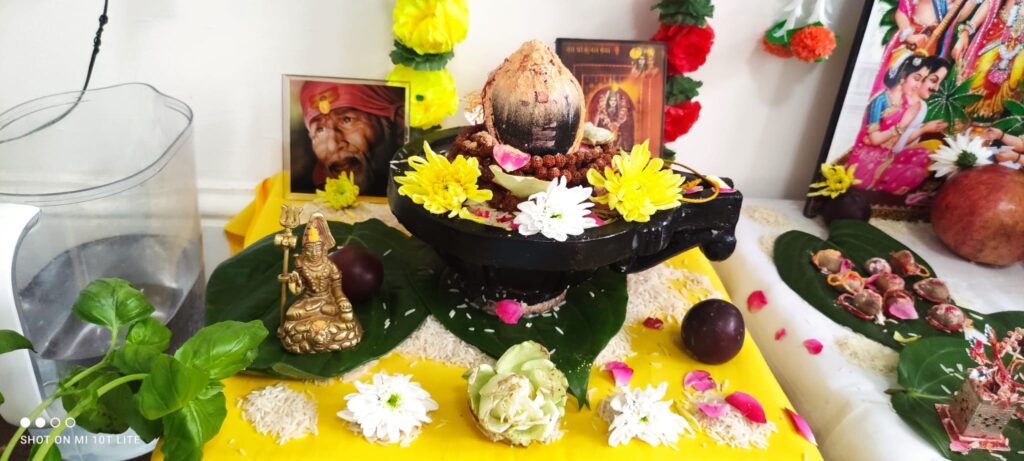
The Rudrashtakam is a beautiful and powerful Sanskrit hymn composed by Goswami Tulsidas, dedicated to Lord Shiva. It consists of 8 verses (Ashtakam), glorifying Lord Shiva’s supreme attributes, his tranquil and destructive forms, and his role as the liberator of souls. This hymn appears in the Uttar Kand of the Ramcharitmanas.
Rudrashtakam Text and Meaning
Here is the text of the Rudrashtakam with its meaning:
Verse 1
ॐ नमःमीशमिशान निर्वाणरूपं
विभुं व्यापकं ब्रह्मवेदस्वरूपम्।
निजं निर्गुणं निर्विकल्पं निरीहं
चिदाकाशमाकाशवासं भजेऽहम्॥
- Meaning:
Salutations to Lord Shiva, the Supreme Controller, whose form embodies liberation. He is omnipresent, formless, and the essence of the Vedas. He is beyond attributes, free from desires, and dwells in the infinite sky of consciousness.
Verse 2
निराकारमोंकारमूलं तुरीयं
गिराज्ञानगोतीतमीशं गिरीशम्।
करालं महाकालकालं कृपालं
गुणागारसंसारपारं नतोऽहम्॥
- Meaning:
I bow to Lord Shiva, the origin of the primordial sound Om, who is transcendental, beyond words and intellect. He is the destroyer of time, merciful, and helps us cross the ocean of existence.
Verse 3
तुषाराद्रिसंकाशगौरं गम्भीरं
मनोभूतकोटि प्रभाश्रीशरीरम्।
स्फुरन्मौलिकल्लोलिनी चारुगंगा
लसद्भालबालेन्दु कण्ठे भुजंगा॥
- Meaning:
I bow to the one who is as white as the snow-covered Himalayas, deep as the ocean, and luminous as millions of Cupids. His head is adorned with the sacred Ganga, and he wears the crescent moon and snakes around his neck.
Verse 4
चलत्कुण्डलं भ्रू सुनेत्रं विशालं
प्रसन्नाननं नीलकण्ठं दयालम्।
मृगाधीशचर्माम्बरं मुण्डमालं
प्रियं शंकरं सर्वनाथं भजामि॥
- Meaning:
I worship Lord Shankara, whose earrings swing beautifully, who has compassionate eyes, a calm face, and a blue throat. He wears tiger skin and a garland of skulls, and he is the beloved savior of all.
Verse 5
प्रचण्डं प्रकृष्टं प्रगल्भं परेशं
अखण्डं अजं भानुकोटिप्रकाशम्।
त्रयः शूलनिर्मूलनं शूलपाणिं
भजेऽहं भवानीपतिं भावगम्यम्॥
- Meaning:
I revere the mighty Lord Shiva, the supreme, eternal, and unborn. He shines like countless suns, wields a trident, and uproots the cause of sorrows. He is Bhavani’s consort and comprehended only through devotion.
Verse 6
कलातीतकल्याण कल्पान्तकारी
सदा सच्चिदानन्द दाता पुरारी।
चिदानन्द सन्दोह मोहापहारी
प्रसीद प्रसीद प्रभो मन्मथारी॥
- Meaning:
O destroyer of Kamadeva (Manmatha), you transcend time and bring auspiciousness. You end the cycle of creation, are the giver of eternal bliss, and the remover of delusions. Be pleased with me, O Lord!
Verse 7
न यावद् उमानाथपादारविन्दं
भजन्तीह लोके परे वा नराणाम्।
न तावत्सुखं शान्ति सन्तापनाशं
प्रसीद प्रभो सर्वभूताधिवासम्॥
- Meaning:
Unless one worships the lotus feet of Lord Shiva, the consort of Uma (Parvati), they cannot find peace, happiness, or freedom from suffering. Bless me, O Lord of all beings.
Verse 8
न जानामि योगं जपं नैव पूजां
नतोऽहं सदा सर्वदा शम्भु तुभ्यम्।
जराजन्मदुःखौघ तातप्यमानं
प्रभो पाहि आपन्नमामीश शंभो॥
- Meaning:
I do not know yoga, prayer, or worship. I simply bow before you, O Shambhu, who is my refuge. Save me from the endless suffering of birth, old age, and death, O Lord Shiva.
Benefits of Chanting Rudrashtakam
- Liberates from Sins:
- Chanting Rudrashtakam with devotion cleanses the soul of past karmic sins and impurities.
- Spiritual Growth:
- Helps the devotee connect deeply with Lord Shiva and fosters spiritual awakening.
- Removes Fear and Negativity:
- Brings inner peace by removing fear, anxieties, and negative energies.
- Attains Moksha (Liberation):
- It aids in freeing oneself from the cycle of birth and death and attaining salvation.
- Blessings of Lord Shiva:
- Ensures Lord Shiva’s blessings for health, wealth, and protection.
- Peace and Prosperity:
- Reciting Rudrashtakam removes obstacles and fills life with happiness and success.
- Purification of Mind:
- Its verses calm the mind, making it a perfect hymn for meditation.
- Relief from Sorrows:
- Removes emotional distress and brings harmony into life.
How to Chant Rudrashtakam
- Best Time:
- Chant it during Brahma Muhurta (early morning) or during Shiva Puja, especially on auspicious days like Maha Shivratri or Mondays.
- Preparation:
- Take a bath and sit in a clean, quiet space.
- Light a diya (lamp) and incense in front of a Shiva Linga or image.
- Method:
- Chant the Rudrashtakam slowly and clearly, focusing on each word’s meaning and Lord Shiva’s divine form.
- Use a Rudraksha mala to keep count if you wish to chant multiple times.
- Offerings:
- Offer water, milk, flowers, Bel Patra, and fruits to Lord Shiva while chanting.
Chanting Shri Rudrashtakam on Maha Shivratri brings immense blessings, divine grace, and a deeper connection with Lord Shiva. It is a profound way to experience peace, happiness, and liberation.
9) Shiv chalisa-Maha Shivratri 2025 in UK

॥ Doha॥
Jai Ganesh Girija Suvan,
Mangal Mul Sujan।
Kahat Ayodhya Das Tum,
Dehu Abhaya Varadan ।।
॥ Chaupaai ॥
Jai Girija Pati Dinadayala,
Sada Karat Santan Pratipala।
Bhaala Chandrama Sohat Nike,
Kanan Kundal Nagaphani Ke।।
Anga Gaur Shira Ganga Bahaye,
Mundamala Tan Chhara Lagaye।
Vastra Khala Baghambar Sohe,
Chhavi Ko Dekha Naga Muni Mohe।।
Maina Matu Ki Hvai Dulari,
Baama Anga Sohat Chhavi Nyari।
Kara Trishul Sohat Chhavi Bhari,
Karat Sada Shatrun Chhayakari।।
Nandi Ganesh Sohain Tahan Kaise,
Sagar Madhya Kamal Hain Jaise।
Kartik Shyam Aur Ganarau,
Ya Chhavi Ko Kahi Jata Na Kauo।।
Devan Jabahi Jaaya Pukara,
Tabahi Dukha Prabhu Aap Nivara।
Kiya Upadrav Tarak Bhaari,
Devan Sab Mili Tumahi Juhari।।
Turata Shadanana Aap Pathayau,
Lavanmesh Mahan Mari Girayau।
Aap Jalandhara Asura Sanhaaraa,
Suyash Tumhara Vidit Sansaaraa।।
Tripurasur Sana Yudha Machaayi,
Sabhi Kripakar Lina Bachaayi।
Kiya Tapahin Bhagiratha Bhaari,
Puraba Pratigya Tasu Puraari।।
Danin Mahan Tum Sama Kou Nahin,
Sevak Astuti Karat Sadahin।
Veda Nam Mahima Tab Gaayi,
Akatha Anaandi Bhed Nahin Payi।।
Pragat Udadhi Mantan Men Jvaalaa,
Jare Sura Sur Bhaye Vihaalaa।
Kinha Daya Tahan Kari Sahaayi,
Nilakantha Tab Naam Kahaayi।।
Pujan Ramchandra Jab Kinhaa,
Jit Ke Lanka Vibhishan Dinhaa।
Sahas Kamal Men Ho Rahe Dhaari,
Kinha Parikshaa Tabahin Puraari।।
Ek Kamal Prabhu Rakheu Joi,
Kamal- Nayan Pujan Chaha Soi।
Kathin Bhakti Dekhi Prabhu Shankar,
Bhaye Prasanna Diye Ichchhit Var।।
Jai Jai Jai Anant Avinaashi,
Karat Kripaa Sabake Ghat Vaasi।
Dushta Sakal Nit Mohin Sataavai,
Bhramat Rahe Mohin Chain Na Aavai ।।
Traahi Traahi Main Nath Pukaaro,
Yahi Avasar Mohi Aan Ubaaro।
Lai Trishul Shatrun Ko Maaro,
Sankat Se Mohin Aan Ubaaro।।
Mata Pita Bhrata Sab Koi,
Sankat Men Puchhat Nahin Koi।
Svaami Ek Hai Aash Tumhaari,
Aay Harahu Aba Sankat Bhaari।।
Dhan Nirdhan Ko Deta Sadaahin,
Jo Koi Janche So Phal Pahin।
Astuti Kehi Vidhi Karai Tumhaari,
Kshamahu Naath Aba Chuka Hamaari।।
Shankar Ho Sankat Ke Naashan,
Mangal Kaaran Vighna Vinaashan ।
Yogi Yati Muni Dhyan Lagaavain,
Naarad Shaarad Shisha Navavain ।।
Namo Namo Jai Namo Shivaaya,
Sura Brahmaadik Paar Na Paaya ।
Jo Yah Patha Kare Man Lai,
Tapar Hota Hai Shambhu Sahaai ।।
Riniyaan Jo Koi Ho Adhikaari,
Paatha Karai So Paavan Haari ।
Putra-hin Kar Ichchha Koi,
Nischaya Shiva Prasad Tehin Hoi ।।
Pandit Trayodashi Ko Laave,
Dhyaan Purvak Homa Karaave ।
Trayodashi Vrat Kare Hameshaa,
Taake Tan Nahin Rahe Kaleshaa ।।
Dhoopa Dipa Naivedya Chadhaavai,
Shankar Sammukh Paath Sunaavai।
Janma janma Ke Paap Nasaave,
Antavaasa Shivapur Men Paave ।।
KaheAyodhya Aasa Tumhaari,
Jani Sakal Dukha Harahu Hamaari।
॥ Doha ॥
Nitt NemKar Praatah Hi,
Paath Kataun Chaalisa ।
Tum Meri Manokaamanaa,
Poorn Karo Jagadish।।
Magasar Chhathi Hemant Ritu,
Samvat Chausath Jaan ।
Astuti Chaalisaa Shivahi,
Poorn Kin Kalyaan ।।
॥ It’s Shree Shiv Chalisa॥
10) Kshama-Prarthana In Maha Shivratri 2025 in UK (क्षमा-प्रार्थना)
After Mantra Pushpanjali offers apologies and asks for forgiveness to Lord Shiva while chanting following Kshama-Prarthana Mantra.
Shiva Kshama Prarthana Mantra
Avahanam Na Janami Na Janami Tavarchanam।
Pujam Chaiva Na Janami Kshamasva Maheshwarah॥
Anyatha Sharanam Nasti Tvameva Sharanam Mam।
Tasmatkarunayabhavena Rakshasva Parvatinathah॥
Gatam Papam Gatam Duhkham Gatam Daridrayameva Cha।
Agata Sukha Sampatih Punyachcha Tava Darshanat॥
Mantrahinam Kriyahinam Bhaktihinam Sureshwar!।
Yatpujitam Maya Deva Paripurnam Tadastu Me॥
Yadaksharapada Bhrashtam Matrahinam Cha Yadbhavet।
Tat Sarvam Kshamyatam Deva Prasida Nandikandharah॥
Har Har Har Mahadev is one of the most famous Aartis of Lord Shiva. This famous Aarti is recited on most occasions related to Lord Shiva.


